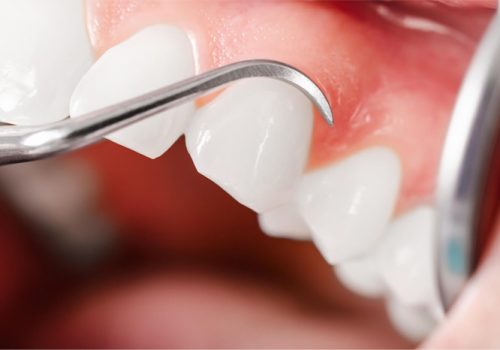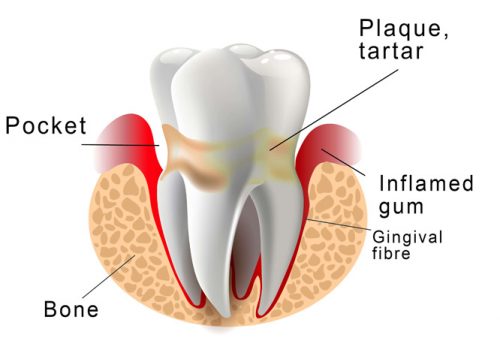Periodontology
Periodontology is the dental specialty dedicated to the tissues around the teeth (bone and gums) as well as their conditions. The aim of periodontology is the restoration and long-term maintenance of the periodontal health which is the foundation of the teeth.


Gingivitis
Gingivitis is microbial inflammation of the gums. Common symptoms are bleeding when brushing the teeth, redness and swelling of the gums. Gingivitis is reversible but if left untreated an progress further and compromise the bone support of teeth.
Periodontitis
Periodontitis is a chronic microbial infection of the periodontal tissue (bone & gums). Although priodontitis is not reversible, treatment aims in the prevention of further damage so that the affected teeth can be saved. if not detected and treated early can lead to tooth loss. Therefore, the earliest the disease is controlled the better the prognosis.

Some of the warning symptoms of periodontal disease are gum bleeding, gum recession, food trapping or increasing spaces between the teeth, gingival abscesses, tooth mobility or drifting and bad breath.
In addition, poorly controlled periodontitis has been linked to the increased risk for cardiovascular diseases, pre-term or low weight birth babies, erectile dysfunction as well as other health problems.
Major risk factors that can contribute to periodontal disease are smoking, diabetes, stress, hormonal changes (pregnancy), immunosupressive conditions (HIV, corticosteroids), genetic disorders ( Down Syndrome, Crohn’s disease), obesity and other nutritional disorders, certain medication (calcium, channel blockers, cyclosporine, phenytoin) as well as family history of periodontal conditions.
The periodontist can arrest the disease progression by reinforcing the oral hygiene, reducing the bacterial load and the inflammation. the treatment is carried out painlessly under local anesthetic and by using the latest instruments, equipment and materials available such as magnifying loupes , specialized scalers, ultrasonic and laser tips as well as antimicrobial agents.
other gum problems can be more cosmetic (gum recession or hyperplasia, “gummy smiles”). There are also various surgical techniques such as bone regeneration and gum augmentation available, to improve further the periodontal support, anatomy and appearance of the tissues and hence the prognosis of the teeth.
Most importantly, long-term regular maintenance by the patient and the periodontist is essential for the successful control of the disease progression and future stability.
 English
English Ελληνικά
Ελληνικά Русский
Русский